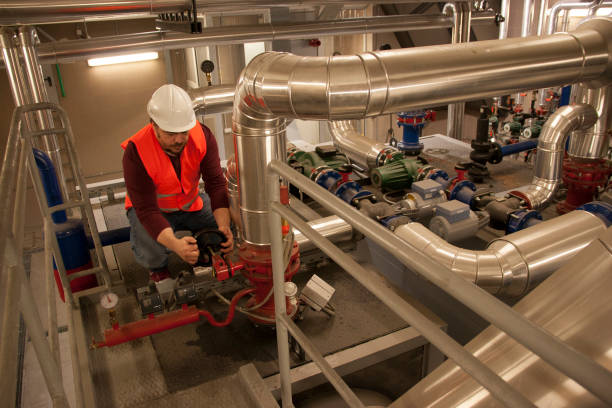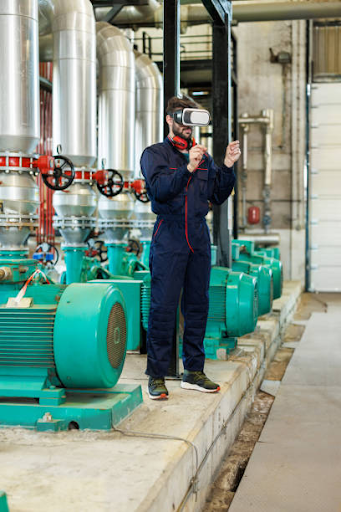Table of Content
- Types of Pipeline Inspection
- Procedure for Conducting Pipeline Inspection
- Benefits of Pipeline Inspection
- Technologies Used in Pipeline Inspection
- Conclusion
Pipeline inspection is a crucial aspect of maintaining the integrity and safety of pipelines across various industries, including oil and gas, water distribution, and chemical processing. Ensuring the integrity of pipelines is essential to preventing leaks, spills, and other hazardous incidents. Pipeline inspection plays a critical role in identifying potential issues before they escalate into major problems, thereby safeguarding public safety and protecting the environment.
Pipeline inspection involves the systematic examination of pipelines to assess their condition, identify defects, and prioritize maintenance activities. The procedure typically includes both internal and external inspections using specialized equipment and technologies.
Types of Pipeline Inspection
Pipeline testing plays a crucial role in various industries, including oil and gas, water supply, and wastewater management. Ensuring the integrity of these pipelines is paramount to preventing leaks, spills, and other potential hazards. Effective Pipeline Inspection Methods are essential for detecting defects and maintaining operational efficiency. Here are the various methods discussed below.
1. Internal Inspection Methods
Internal inspection methods include the use of tools such as intelligent pigs, which travel inside the pipeline to collect data on its condition. Other methods include remote-operated vehicles (ROVs) and crawlers equipped with cameras and sensors. Internal inspection methods involve examining the condition of the pipeline from within.
I. Intelligent Pigs
Intelligent pigs, also known as pipeline inspection gauges (PIGs), are devices that traverse inside the pipeline, collecting data as they move. These sophisticated tools are equipped with various sensors to detect anomalies such as corrosion, cracks, and wall thickness variations. The data collected by intelligent pigs provides valuable insights into the overall condition of the pipeline, allowing operators to identify potential issues before they escalate.
II. Remote-Operated Vehicles and Crawlers
ROVs and crawlers are robotic devices designed to navigate through pipelines for inspection purposes. Equipped with high-resolution cameras and sensors, these vehicles provide real-time visual feedback on the pipeline’s interior. ROVs are particularly useful in situations where access is limited or hazardous for human inspectors. They play a vital role in conducting detailed inspections in challenging environments.
2. External Inspection Methods
External inspection methods involve visual inspections of the pipeline’s exterior surface, as well as non-destructive testing techniques such as ultrasonic testing (UT) and magnetic flux leakage (MFL). These methods help detect corrosion, cracks, and other defects that may compromise the pipeline’s integrity.
I. Visual Inspections
Visual inspections involve visually examining the external surface of the pipeline for signs of damage or deterioration. While visual inspections provide a valuable initial assessment, they may not always detect defects hidden beneath the surface or within protective coatings.
II. Non-Destructive Testing (NDT)
NDT techniques, such as ultrasonic testing (UT) and magnetic flux leakage (MFL), are used to assess the integrity of the pipeline without causing damage. UT involves sending ultrasonic waves through the pipeline wall and analyzing the reflected signals to identify defects. MFL detects changes in magnetic field patterns caused by defects such as corrosion and cracks.
Procedure for Conducting Pipeline Inspection

Pipeline inspection is essential for ensuring the integrity and safety of the infrastructure. Regular inspections can help identify potential issues early on, preventing costly repairs and minimizing the risk of accidents. The major steps in the procedure are discussed below:
1. Pre-inspection Preparations
Before conducting a pipeline inspection, operators must perform thorough preparations, including scheduling, obtaining permits, and ensuring the availability of necessary equipment and personnel.
2. Inspection Process Step-by-Step
The inspection process typically involves launching the inspection tool into the pipeline, monitoring its progress in real-time, and analyzing the data collected for anomalies and defects.
3. Post-inspection Analysis and Reporting
After completing the inspection, operators analyze the data collected to assess the pipeline’s condition and prioritize any necessary repairs or maintenance activities. A detailed report documenting the findings and recommendations is then prepared for regulatory compliance and internal record-keeping purposes.
Benefits of Pipeline Inspection

Benefits of pipeline inspection include early detection of potential issues, preventing costly repairs, and minimizing downtime. Additionally, regular inspections can ensure compliance with industry regulations and standards, promoting safety and environmental protection. A few benefits of pipeline inspection are discussed below:
1. Preventing Leaks and Accidents
Regular pipeline inspection helps identify potential issues early, reducing the risk of leaks, spills, and accidents that could result in environmental damage and financial losses.
2. Ensuring Regulatory Compliance
Many industries are subject to regulations and standards governing the inspection and maintenance of pipelines. By conducting regular inspections, operators can ensure compliance with these requirements and avoid penalties.
3. Extending Pipeline Lifespan
Proactive maintenance and timely repairs identified through inspection processes can prolong the lifespan of pipelines, maximizing their operational efficiency and reducing the need for costly replacements.
Mentor Visual iQ+ HD VideoProbe enhances remote visual inspections by utilizing artificial intelligence and cloud-based digital tools for improved productivity, accuracy, and reliability of inspection data.
Sensor Networks HD-PTZx Industrial Camera System is a portable, high-definition, colour video inspection system for inspecting tanks, vessels, drums, and confined spaces using state-of-the-art LEDs.
Technologies used in Pipeline Inspection
Technologies are used in pipeline inspection to help detect defects, corrosion, and other issues within pipelines to ensure their integrity and safety. A few of the technologies are discussed below.
1. Magnetic Flux Leakage (MFL)
MFL technology uses magnetic fields to detect anomalies in the pipeline’s wall thickness, such as corrosion and metal loss, providing valuable insights into the pipeline’s condition.
2. Ultrasonic Testing (UT)
UT involves the use of high-frequency sound waves to inspect the thickness and integrity of the pipeline’s walls, helping identify defects such as cracks and weld flaws.
Pipeline Pigs
Pipeline pigs are devices inserted into the pipeline to perform various functions, including cleaning, inspection, and maintenance. Smart pigs equipped with sensors and cameras can provide detailed data on the pipeline’s condition.
NDT Products is known for delivering top-notch Non-destructive Testing Solutions that exceed industry standards. With an extensive range of high-quality products and unmatched expertise, we cater to the diverse needs of clients across various sectors, from aerospace and automotive to oil and gas.
Whether you’re seeking ultrasonic testing equipment, Magnetic Particle Inspection Tools, or radiographic testing accessories, we’ve got you covered with precision-engineered solutions designed to enhance efficiency and ensure utmost reliability in every inspection task.
Conclusion
Advancements in inspection technologies like robotics and AI are improving pipeline inspections. AI-driven analytics and robotic platforms are being integrated for real-time data analysis and predictive maintenance. Predictive maintenance strategies are gaining popularity to anticipate and prevent pipeline failures.
By utilizing these innovative technologies, companies can improve their pipeline inspections, ultimately reducing the risk of costly repairs and environmental damage. As the industry continues to evolve, it is crucial for companies to stay up-to-date with the latest advancements in inspection technologies to ensure the integrity of their pipelines.
With a commitment to innovation and customer satisfaction, NDT Products stands at the forefront of the NDT industry, offering not just products, but the best solutions tailored to meet the unique requirements of each client.